| 22 January |
• yesterday • tomorrow |
| Optional Memorial of Saint Vincent, Deacon and Martyr |
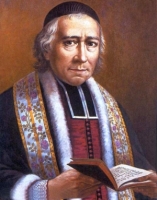
Guillaume Joseph Chaminade
Second-youngest of fifteen children of Blaise Chaminade and Catherine Bethon; a deeply religious family, three of his brothers were also priests. Took the name Joseph as his Confirmation name, and preferred it to William. At age ten he went to the College of Mussidan where one of his brothers was a professor; as student, teacher, steward, and chaplain, William remained there for 20 years.
Priest during the persecutions and violence against the Church of the French Revolution. He refused to swear allegiance to the Civil Constitution of the Clergy in 1791, and was forced to minister to his flock in secret. Beginning in 1795, he had the job of receiving the returning priests who had taken the Civil oath, but later saw their error; he helped about 50 reconcile with the Church, and return to work in the diocese.
Exiled to Zaragoza, Spain from 1797 to 1800 during the French Directorate, the only time he lived anywhere outside his native Bordeaux. Near the shrine of Our Lady of the Pillar, Chaminade received a message, telling him to be Mary's missionary, to found a society of religious to work with her to restore the Faith in France. On his return to Bordeaux in November 1800, he founded the Sodalities of Our Lady.
Chaminade's concept of the Sodality was to gather all Christians - men and women, young and old, lay and clerical - into a unique community of Christ's followers unafraid to be known as such, committed to living and sharing their faith, dedicated to supporting one another in living the Gospel, working under the protection of the Virgin Mary. To the usual religious vows of poverty, chastity, and obedience, the Marianists add a fourth vow of stability, faithfulness to the congregation, and special consecration to Mary. As an outward sign of this fourth vow, they wear a gold ring on their right hand.
Apostolic Administrator for the diocese of Bazas. Named Missionary Apostolic by the Vatican in 1801. As his own insights developed, Chaminade saw the Sodality as the Marianist Family, dedicated to sharing Our Lady's mission of bringing Christ to the world. It was characterized by a deep sense of the equality of all Christians, regardless of state of life, by a spirit of interdependence, by concern for individual spiritual growth, and by the desire of presenting "the amazing and attractive reality of a people of saints."
Some Sodality members later formed the nucleus of the Daughters of Mary Immaculate, founded by Adele de Batz de Trenquelleon and Father Chaminade in 1816, and the Society of Mary, founded in 1817. The institutes grew, and members began teaching in primary, secondary, and trade schools. Father William tried to start a network of teacher's schools for Christian education, but it failed due to the 1830 Revolution. In 1836, the Daughters of Mary established rural schools for women throughout southwestern France. The Society of Mary spread into Switzerland in 1839, then into the United States, becoming established in Dayton, Ohio in 1849, the Marianist Sisters in Somerset, Texas in 1949.
8 April 1761 at Perigeux, France
• 22 January 1850 of natural causes in Bordeaux, France
• buried in the Carthusian cemetery in Bordeaux
3 September 2000 by Pope John Paul II at Saint Peter's, Rome, Italy
We were witnesses during our younger days of his life and words. We affirm that we never saw him spend a day, not even a single hour at anything which did not relate directly to God and to the welfare of souls. - Father John Lalanne
It was Mary who conceived the plan of the Society. It was she who laid its foundations, and she will continue to preserve it." - Blessed William
What is a faithful man to do in the chaos Of events which seem to swallow him up? He must sustain himself calmly by Faith. Faith will make him adore the eternal plan of God .Faith will assure him that to those who love God all things work together for good. - Blessed William
Our work is great; it is magnificent. It is universal because we are the missionaries of Mary, She says to us, 'Do whatever He tells you.' Yes, we are all missionaries. - Blessed William
Jesus made Mary the companion of His labors, of His joy, of His preaching, of His death. Mary had a part in all the glorious, joyous, and sorrowful mysteries of Jesus. - Blessed William
The deposit of the Faith is entirely in Mary. At the foot of the Cross she held the place of the Church. - Blessed William
The mysteries which were announced to Mary were accomplished because she believed. - Blessed William
A true Christian cannot live any life but the life of Our Savior Jesus. When we try to imitate Him the divine plan is carried out in our lives. The Blessed Virgin is our Model. She is a very exact copy of her Son Jesus. When we are devoted to Mary we will imitate Jesus. - Blessed William
The beatification during the Jubilee Year of William Joseph Chaminade, founder of the Marianists, reminds the faithful that it is their task to find ever new ways of bearing witness to the faith, especially in order to reach those who are far from the Church and who do not have the usual means of knowing Christ. William Joseph Chaminade invites each Christian to be rooted in his Baptism, which conforms him to the Lord Jesus and communicates the Holy Spirit to him. Father Chaminade's love for Christ, in keeping with the French school of spirituality, spurred him to pursue his tireless work by founding spiritual families in a troubled period of France's religious history. His filial attachment to Mary maintained his inner peace on all occasions, helping him to do Christ's will. His concern for human, moral and religious education calls the entire Church to renew her attention to young people, who need both teachers and witnesses in order to turn to the Lord and take their part in the Church's mission. - Pope John Paul II, from his homily during the beatification of Blessed William
https://catholicsaints.info/blessed-william-joseph-chaminade/
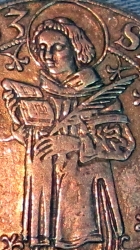
• Vincent of Zaragoza
• Vincent the Deacon
• Vincent Tourante
• Vincent of Aragon
• Vincent of Huesca
Friend of Saint Valerius of Saragossa in Spain, and served as his deacon. Imprisoned and tortured in Valencia, Spain for his faith during the persecutions of Diocletian; part of his time was spent being burned on a gridiron. While in prison, he converted his jailer. Was finally offered release if he would give up the scripture texts for burning, but he refused. Martyr. Acts written by the poet Prudentius.
at Heusca, Aragon (in modern Spain)
304 at Valencia, Spain
• vine dressers
• vinegar makers
• vintners
• wine growers
• wine makers
• Portugal
• 5 cities
• deacon being torn by hooks
• deacon holding a ewer
• deacon holding a millstone
• deacon holding several ewers and a book
• deacon with a raven
• deceased deacon whose body is being defended by ravens
"To you has been granted in Christ's behalf not only that you should believe in him but also that you should suffer for him." Vincent had received both these gifts and held them as his own. For how could he have them if he had not received them? And he displayed his faith in what he said, his endurance in what he suffered. No one ought to be confident in his own strength when he undergoes temptation. For whenever we endure evils courageously, our long-suffering comes from him Christ. He once said to his disciples: "In this world you will suffer persecution," and then, to allay their fears, he added, "but rest assured, I have conquered the world." There is no need to wonder then, my dearly beloved brothers, that Vincent conquered in him who conquered the world. It offers temptation to lead us astray; it strikes terror into us to break out spirit. Hence if our personal pleasures do not hold us captive, and if we are not frightened by brutality, then the world is overcome. At both of these approaches Christ rushes to our aid, and the Christian is not conquered. - from a sermon by Saint Augustine of Hippo
Everlasting God, to whom all hidden things are revealed, who sent into the world Thine Only Begotten Son, our Lord Jesus Christ, conceived through the Holy Ghost, born of the Virgin Mary, that He might take on Him the punishment of our sins, and by His resurrection snatch us from the gates of hell, grant to our hearts such steadfastness of faith that confessing Christ, Thy Son, we may not perish but may be joined to Him in the confession of Thy Holy Name. Amen. - Saint Vincent
https://catholicsaints.info/saint-vincent-of-saragossa/

• Ladislaus Batthyány-Strattmann
• László Batthyány-Strattmann
Born into an ancient noble Hungarian family, the sixth of ten brothers. His family moved to Austria when he was six years old, and his mother died when Ladislao was twelve. When of age he studied agriculture, chemistry, physics, philosophy, literature, music, and medicine at the University of Vienna, graduating with a medical degree in 1900. On 10 November 1898 he married Countess Maria Teresa Coreth, a pious woman, and the couple had thirteen children; the whole family attended Mass and prayed the Rosary every day.
In 1902 Ladislaus opened a private 25-bed hospital in Kittsee, Austria. He worked there as a general practitioner, and when he had sufficient staff, specialized as a surgeon and eye doctor. During World War I the flood of injured soldiers required him to expand the hospital to 120 beds.
In 1915 Ladislaus inherited the castle of Körmend, Hungary, and with it the family name Strattman and the title of Prince. In 1920 he moved his family to the castle, and turned one wing into a hospital specializing in eye diseases. Ladislaus' skills led him to become an internationally known specialist in opthamology.
Dr Ladislaus never turned away a patient because they could not pay, and provided funds to the destitute. He treated all, kept them in hospital as long as necessary, gave away medications, accepted what patients would pay when they would, but never asked a fee from anyone except that they pray an Our Father for him. He prayed over each patient before working on them, knew that his skills were simply God working through his hands, and saw his family fortune as a way to help the poor. He was considered a saint in life by his family, his patients and fellow healers.
20 October 1870 in Dunakiliti, Hungary
• 22 January 1931 at Vienna, Austria of bladder cancer
• buried in the family tomb in Güssing, Hungary
23 March 2003 by Pope John Paul II
When I grow up, I will be a doctor and give free treatment to the sick and the poor. - Blessed Ladislao as a little boy
In fidelity and charity. - Blessed Ladislao's life motto
I am happy. I am suffering atrociously, but I love my sufferings and am consoled in knowing that I support them for Christ. - Blessed Ladislao to his sister, discussing his terminal cancer
https://catholicsaints.info/blessed-ladislao-batthyany-strattmann/

Daughter of Jose Domingo Vicuña and Mercedes Pino. Her father was a soldier, and Laura was born three months after the outbreak of civil war in Chile. With her husband in arms, and herself and her infant in peril, Laura's mother moved across the Andes to raise the girl in Las Lajas, Argentina. Laura's father was killed soon after, and to survive, Mercedes became the mistress and common-law wife of a man named Manuel Mora.
Mora paid for Laura to attend a boarding school run by the Salesian Sisters, where the girl was extremely happy and helpful. She made her First Communion on 2 June 1901, a decisive moment in her life. "Oh my God, I want to love you and serve you all my life," she wrote in her notebook. "I give you my soul, my heart, my whole self." She tried then, at age ten, to join the Salesians, but her bishop recommended that she wait.
Home for Christmas holidays, Laura had to fend off the repeated amorous advances of Mora, finally being forced to flee the house to avoid him. She prayed to be spared the life her mother was leading, offered her own life if they could escape from it, and asked her confessor again for permission to join the Salesians. Because he knew of that no matter how inconvenient it was, Laura had a true call to the religious life, he permitted it. She joined the Sodality of the Children of Mary on 8 December 1901.
In late 1903, Laura became severely ill, and returned to her mother. On 14 January 1904, in a drunken rage, Mora began ordering the mother and daughter around. Laura tried to run from the house, but Mora caught her and beat her unconcious. Though she recovered conciousness, Laura never recovered her health, dying eight days later from a combination the disease and abuse. When Mercedes learned of her daughter's offer to die for her, Laura's mother left Mora and returned to the Church.
5 April 1891 in at Santiago, Chile
22 January 1904 at Junín de los Andes, Neuquén, Argentina
3 September 1988 by Pope John Paul II
• abuse victims
• against incest
• against the death of parents
• Argentina
• incest victims
• martyrs
https://catholicsaints.info/blessed-laura-vicuna/
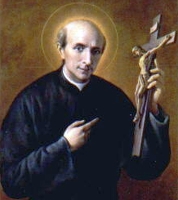
Born to the Italian nobility. Priest. Taught theology. He lived in constant danger working with the sick during a cholera epidemic. Highly successful fund-raiser for charities for the poor. Founded guilds for workers, agricultural schools, loan associations, orphanages and homes for girls. Felt a strong calling to bring Christ to Muslims, and founded a program to incorporate lay people in the apostolate of priests. Founded the Pious Society of Missions (Pallottines) for urban mission work. Started the special observance of the Octave of Epiphany for the reunion of the Eastern and Roman Churches, and the return of the Church in England.
21 April 1795 in Rome, Italy
• 22 January 1850 in Rome, Italy from a severe cold
• probably caught the fatal illness on a cold rainy night when he gave his cloak to a beggar who had none
20 January 1963 by Pope John XXIII
Since God is perfect in loving man, man must be perfect in loving his neighbor. - Saint Vincent Pallotti
Not the goods of the world, but God.
Not riches, but God.
Not honors, but God.
Not distinction, but God.
Not dignities, but God.
Not advancement, but God.
God always and in everything.
- Saint Vincent Pallotti
Remember that the Christian life is one of action; not of speech and daydreams. Let there be few words and many deeds, and let them be done will. - Saint Vincent Pallotti
You must be holy in the way that God asks you to be holy. God does not ask you to be a Trappist monk or a hermit. He wills that you sanctify the world and your everyday life. - Saint Vincent Pallotti
https://catholicsaints.info/saint-vincent-pallotti/
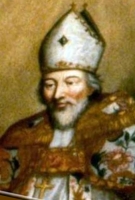
Barnard, Barnardo
Born to the French nobility. Military officer in the army of Blessed Charlemagne. Upon the death of his parents, he retired from the military, divided his property into three parts (one for the Church, one for the poor, one for his children), bought the monastery in Ambronay, and retired there. Abbot at Ambronay in 805. Archbishop of Vienne, France in 810; Bernard resisted the appointment but accepted after being ordered to do so by Charlemagne and Pope Saint Leo III. Worked to unite the Church in France and the East, trying to overcome their differences in the use and attitude to images. He became embroiled in the political division of lands in France, was ordered deposed by the winning side, and retired from public life to concentrate on the pastoral duties of his see. The town of Romans grew up around the place were he used to go for solitude.
778 near Lyons, France
• 23 January 842 at Vienne, France of natural causes
• re-interred on 23 April 944
• relics destroyed by Huguenots in the 16th century
1907 by Pope Saint Pius X (cultus confirmation)
agricultural workers, farm workers, farmers, field hands, husbandmen
https://catholicsaints.info/blessed-bernard-of-vienne/
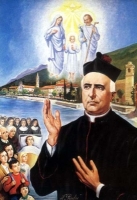
Joseph Nascimbeni
Son of a carpenter. Franciscan tertiary. Priest in the diocese of Verona, Italy, ordained in 1874. Elementary school teacher at San Pietro di Lavagano, Italy for three years. Parish priest at Castelletto del Garda, Italy, an area that was poor and very removed from the modern world. He worked to improve living conditions, bringing in better plumbing and electrical service, connecting them to the outside world by mail and telegraph, and started a craft school; he even did part of the brick work on the new parish church. Founded the Little Sisters of the Holy Family to help with his work when the Ursulines were unable to work in his parish; when the Little Sisters received papal approval in 1909, they already had 64 houses and 320 sisters working with the sick and elderly; they continue their good work today in several countries. Father Giuseppe suffered from a stroke in 1916, and spent his final five years in a wheelchair.
22 March 1851 in Torri del Benaco, Verona, Italy
22 January 1922 in Castelletto del Garda, Verona, Italy of natural causes
17 April 1988 by Pope John Paul II
https://catholicsaints.info/blessed-giuseppe-nascimbeni/
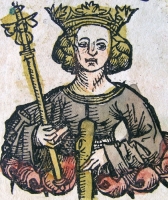
• Theodolinda of Monza
• Dietlind, Dietlinde, Teodolinda, Teolinda, Theodelind, Theodelinde, Theudelinde
Born to the nobility, the daughter of Wandrada and Duke Garibald I of Bavaria. She married King Authari of the Lombards in 588 in an arranged, political marriage, and was widowed in 590. In 591 she married Agilulf of Turin who ascended as the new king of the Lombards. Theodolinda devoted herself to restoring orthodox Christianity against the heresy of Arianism. She helped convert Agilulf to Catholicism from Arianism, and the two donated great wealth to existing churches, funded new churches in the Lombardy and Tuscany regions, and helped forward the work of Pope Saint Gregory the Great and Saint Columbanus of Bobbio. Mother of Prince Adaloaldo in 603. Widowed again in 616, she served as regent during a period of great political turmoil until Adaloaldo was an adult.
570 in Regensburg, Germany
22 January 627 in Monza, Italy
https://catholicsaints.info/blessed-theodolinda-the-queen/
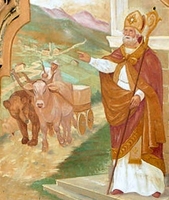
Ursicino, Ursicinus
Bishop in Gaul (modern France) in the late 4th and early 5th century. When his region was invaded by Vandals c.407, Olcese fled to a village in the Liguria area of modern Italy; the town is today known as Sant’Olcese. There he lived as a prayerful hermit, and worked to convert the people of the region.
Legend says that a bear once killed one of a pair of oxen that were pulling a cart of building materials for Saint Olcese. The bear then turned to attack Olcese, but the saint blessed the bear, made the sign of the cross over it, and the animal took the place of the ox it had just killed. The bear and the remaining ox then hauled the materials to the site where Olcese used them to build a church.
• early 5th century in Sant’Olcese, Liguria, Italy of natural causes
• relics known to have been enshrined in the local church in Sant’Olcese since at least 1155
with a cart that is being pulled by a bear and an ox yoked together
https://catholicsaints.info/saint-olcese/
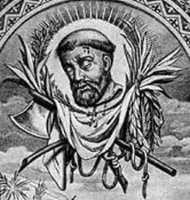
Anastasius XIV, Magundat
Pagan magician. Soldier in the army of Persian king Khusrow II during the campaign that brought the Holy Cross from Jerusalem to Persia. Magundat was so impressed by the obvious power of the relic, and the devotion and sanctity of the Christians who flocked to it, that he converted to Christianity, left the army, took the name Anastasius, and became a monk in Jerusalem. After seven years of prayer and solitude, Anastasius returned to Persia to convert his countrymen. He was soon arrested for his faith, and was promised high honours if he would deny Christ and return to the service of Khusrow; he declined. Martyred with about 70 other Christians whose names have not come down to us.
in Persia as Magundat
• strangled and beheaded in 628 in Persia
• relics translated to Palestine, and then to Rome
• against headaches
• goldsmiths
https://catholicsaints.info/saint-anastasius-the-persian/
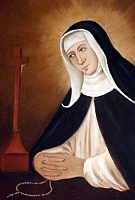
30 January (Dominicans)
By age 25, Maria had been married twice, to Baccio Mancini and them Guillermo Spezzalaste, widowed twice, and saw all seven of her children die in childhood. She became a spiritual student Saint Catherine of Siena and took the veil of the Dominican Third Order at the Holy Cross monastery in Pisa, Tuscany, Italy. Discipline there was lax, and many of the sisters were more meddlesome than holy. Maria was soon the leader of a small group of young, pious but timid sisters, all of whom moved to the new monastery of Saint Dominic in Pisa. Maria assisted its founder, Blessed Chiara Gambacorta, to make the house an example of the Domincan religious life. Prioress of the house for ten years. Received visions of the wounded Jesus.
• 22 January 1431 in Pisa, Italy of natural causes
• buried in the church of the Saint Dominic monastery in Pisa
2 August 1855 by Pope Pius IX (cultus confirmation)
https://catholicsaints.info/blessed-maria-mancini/
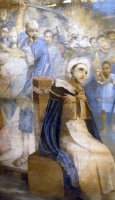
24 November as one of the Martyrs of Vietnam
Educated in Barcelona, Spain where he joined the Dominicans. Priest. Missionary to the Philippines. Missionary to Vietnam in 1732. Spent nine years in prison for his faith during which he converted fellow prisoners and supervised evangelists on the outside. Martyr.
14 December 1702 in Tortosa, Spain
beheaded on 22 January 1745 in Thang Long, Hanoi, Vietnam
19 June 1988 by Pope John Paul II
https://catholicsaints.info/saint-francesc-gil-de-federich-de-sans/
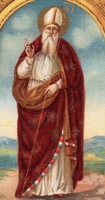
Gaudentus
Convert. Priest at Ivrea near Turin, Italy. Friend of Saint Laurence of Novara, Saint Eusebius of Vercelli and Saint Ambrose of Milan. Bishop of Novara, Italy from 398 until his death, serving for nearly 20 years. Legend says that after his death, the corpse began repeating sermons Gaudentius had given so that his priests could write them down and continue to use them.
Ivrea, Italy
417 of natural causes
Novara, Italy
https://catholicsaints.info/saint-gaudentius-of-novara/
William Pattenson
29 October as one of the Martyrs of Douai
Studied at Rheims, France. Ordained in September 1587. Returned to England in 1588 to minister to covert Catholics. Arrested in Clerkwenwell, England in December 1591 at a private home where he was saying Mass. He was condemned to death for the crime of priesthood. While in awaiting his execution, he ministered to other prisoners, and converted six of them to Catholicism.
Durham, England
hanged, drawn, and quartered on 22 January 1592 at Tyburn, London, England
15 December 1929 by Pope Pius XI
https://catholicsaints.info/blessed-william-patenson/
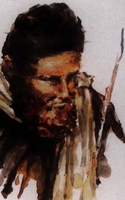
• Alfonso Leciniana
• Alonso Leciniana
• Mateo Alonso de Leciñana y Alonso
• Matthew Alonso Leziniana
24 November as one of the Martyrs of Vietnam
Dominican priest. Missionary to the Philippines, and then to Vietnam. Martyr.
26 November 1702 in Nava del Rey, Valladolid, Spain
beheaded on 22 January 1745 in Thang Long, Hanoi, Vietnam
19 June 1988 by Pope John Paul II
https://catholicsaints.info/saint-mateo-alonso-de-lecinana/
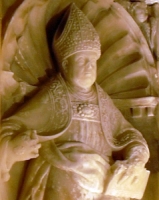
Valerio, Valero
Bishop of Zaragoza, Spain from 290 to 315. Attended the Council of Iliberis. Imprisoned and then exiled during the persecutions of Diocletian, but returned to his see after the Edict of Toleration. Friend of Saint Vincent of Saragossa, who served as his deacon.
• 315
• relics translated to Roda, Spain
• head and arm translated to Zaragoza, Spain
Zaragoza, Spain
https://catholicsaints.info/saint-valerius-of-saragossa/
• Birthwald of Glastonbury
• Brithwald of Sarum
• Berhtwald, Bertwald, Birthwold, Brihtwald, Brithwold, Britwaldus, Britwold
Benedictine monk at Glastonbury Abbey. Bishop of Ramsbury, England in 1005; he served for 40 years. He eventually moved his see to Old Sarum (modern Salisbury, England). Benefactor of Glastonbury and Malmesbury abbeys. Given to visions, and had the gift of prophecy.
• 1045 of natural causes
• buried at Glastonbury Abbey, England
https://catholicsaints.info/saint-brithwald-of-ramsbury/
• Walter of Bierbeek
• Walter of Himmerod
• Walter of Villers
• Gautier, Gualterius, Walther, Waltherus
Knight in the Third Crusade, and frequent combatant in royal jousts. Benedictine Cistercian monk at Himerrode (in modern Germany). He served his house as guest master, confessor to his brother monks, and as a gentle example to all who met him.
Brabant (in modern Belgium)
1222 at Villers, Belgium of natural causes
https://catholicsaints.info/blessed-walter-of-himmerode/
Father Remigi of El Papiol
Franciscan Capuchin priest. Murdered by Marxists in the Spanish Civil War.
20 September 1885 in El Papiol, Barcelona, Spain
22 January 1937 in Cerdanyola, Barcelona, Spain
• 21 November 2015 by Pope Francis
• celebrated at the cathedral of Santa Creu i Santa Eulàlia, Barcelona, Spain presided by Cardinal Angelo Amato
https://catholicsaints.info/blessed-esteve-santacana-armengol/
Benedictine monk and abbot. Founded nine monasteries in in the kingdom of Naples (in modern Italy) including Scandrilia, Sora, and Sangro.
c.951 at Foligno, Etruria (Tuscany district of modern Italy)
1031 at Sora, Campania, Italy of natural causes
• against fever
• against snakes
https://catholicsaints.info/saint-dominic-of-sora/
Daughter of Saint Paula. Friend and spiritual student of Saint Jerome. Married in her teens to Furius, son of Titiana; widowed after only seven months, after which she consecrated herself to God. Student of Hebrew.
c.363
383 in Rome, Italy of a fever
• brides
• widows
https://catholicsaints.info/saint-blaesilla/
Brother of Saint Orontius of Puigcerda. Missionary in the Pyrenees, working with Saint Orontius and Saint Victor of Puigcerda. Martyr.
at Cimiez, France
• martyred in 305 at Puigcerda, Spain
• relics enshrined at Embrun, France
https://catholicsaints.info/saint-vincent-of-puigcerda/
Brother of Saint Vincent. Missionary in the Pyrenees, working with Saint Vincent and Saint Victor of Puigcerda. Martyr.
at Cimiez, France
• martyred in 305 at Puigcerda, Spain
• relics enshrined at Embrun, France
https://catholicsaints.info/saint-orontius-of-puigcerda/
Missionary in the Pyrenees, working with Saint Vincent of Puigcerda and Saint Orontius of Puigcerda. Martyr.
at Cimiez, France
• martyred in 305 at Puigcerda, Spain
• relics enshrined at Embrun, France
https://catholicsaints.info/saint-victor-of-puigcerda/
Dominican bishop who restored monastic life and discipline in the region of Como, Italy.
1459 in Como, Lombardy, Italy of natural causes
https://catholicsaints.info/blessed-antonio-della-chiesa/
Monk at the Saint Saba monastery near Bethlehem.
Medosaga, Ankara, Galatia
630
https://catholicsaints.info/saint-antioco-sabaita/
• Wendreda
CatholicSaints.Info Portable Edition